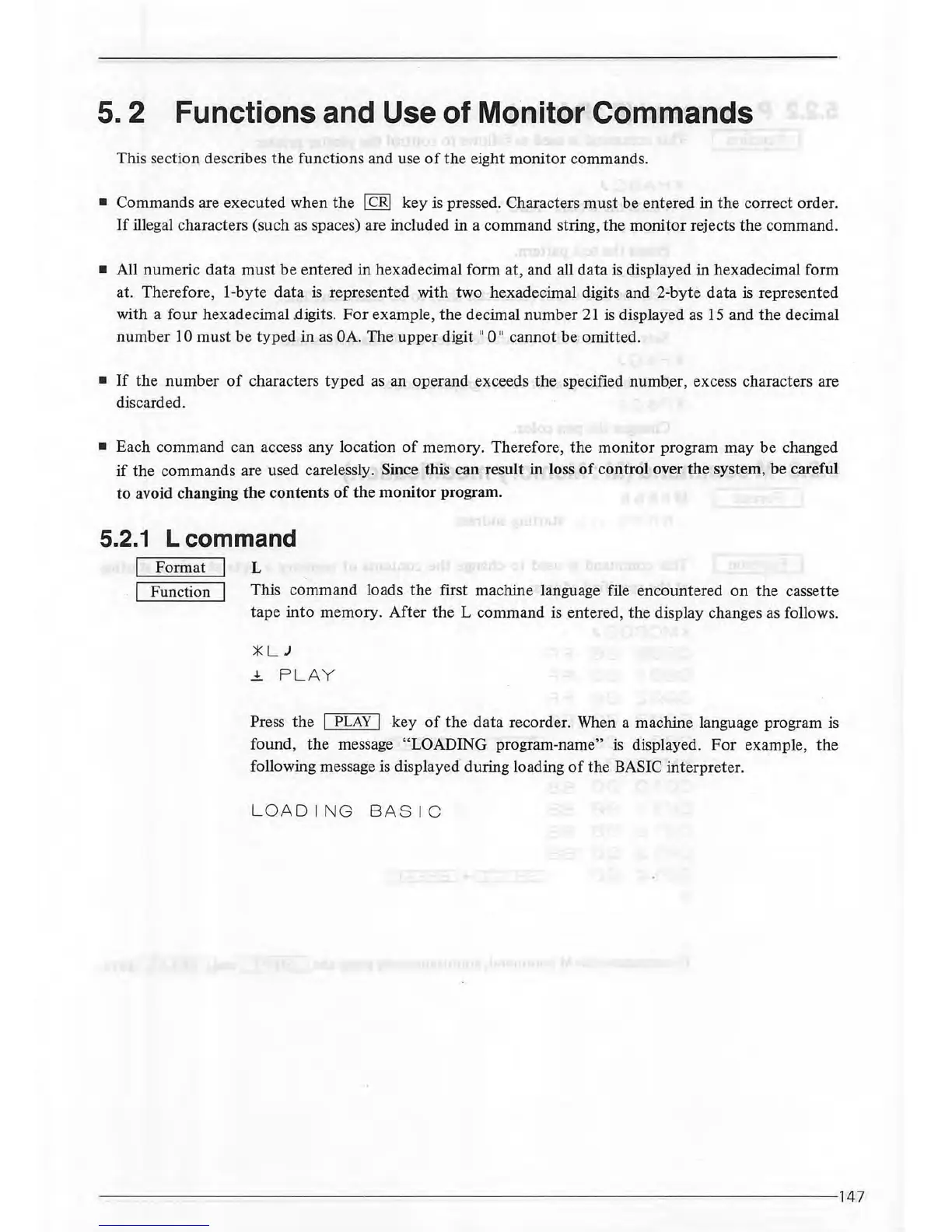5.2
Functions
and
Use
of
Monitor Commands
This section describes
the
functions and use
of
the eight monitor commands.
• Commands are executed when
the
I
CRI
key is pressed. Characters must be entered in
the
correct order.
If
illegal characters (such
as
spaces) are included in a command string,
the
monitor rejects
the
command.
• All numeric data must
be
entered in hexadecimal form at, and all
data
is displayed in hexadecimal form
at. Therefore, 1-byte
data
is
represented with two hexadecimal digits and 2-byte
data
is
represented
with a four hexadecimal .digits.
For
example,
the
decimal number
21
is
displayed
as
15
and
the
decimal
number
10 must be typed
in
as
OA.
The upper digit
11
0
11
cannot be omitted.
•
If
the
number
of
characters typed
as
an operand exceeds
the
specified numb.er, excess characters are
discarded.
• Each command can access any location
of
memory. Therefore,
the
monitor program may be changed
if
the commands are used carelessly. Since this can result in loss
of
control over the system,
be
careful
to avoid changing
the
contents
of
the
monitor
program.
5.2.1 Lcommand
I Format I L
. I Function I
'
This command loads
the
first machine language file encountered
on
the
cassette
tape
into
memory. After
the
L command is entered, the display changes
as
follows.
)j(
LJ
...!.
PL
AY
Press the I PLAY I key
of
the
data recorder. When a machine language program
is
found, the message "LOADING program-name" is displayed.
For
example,
the
following message
is
displayed during loading
of
the BASIC interpreter.
L
OA
DIN
G BA
SI
C
----------------------------
--
--------
--
----------------
--
--------
--
----
--147
